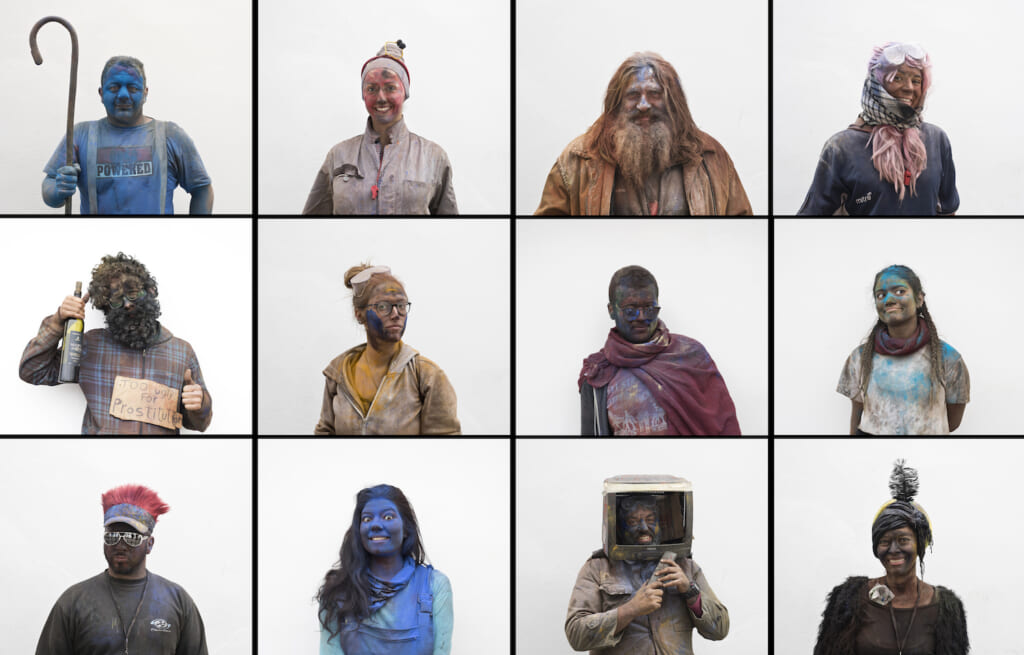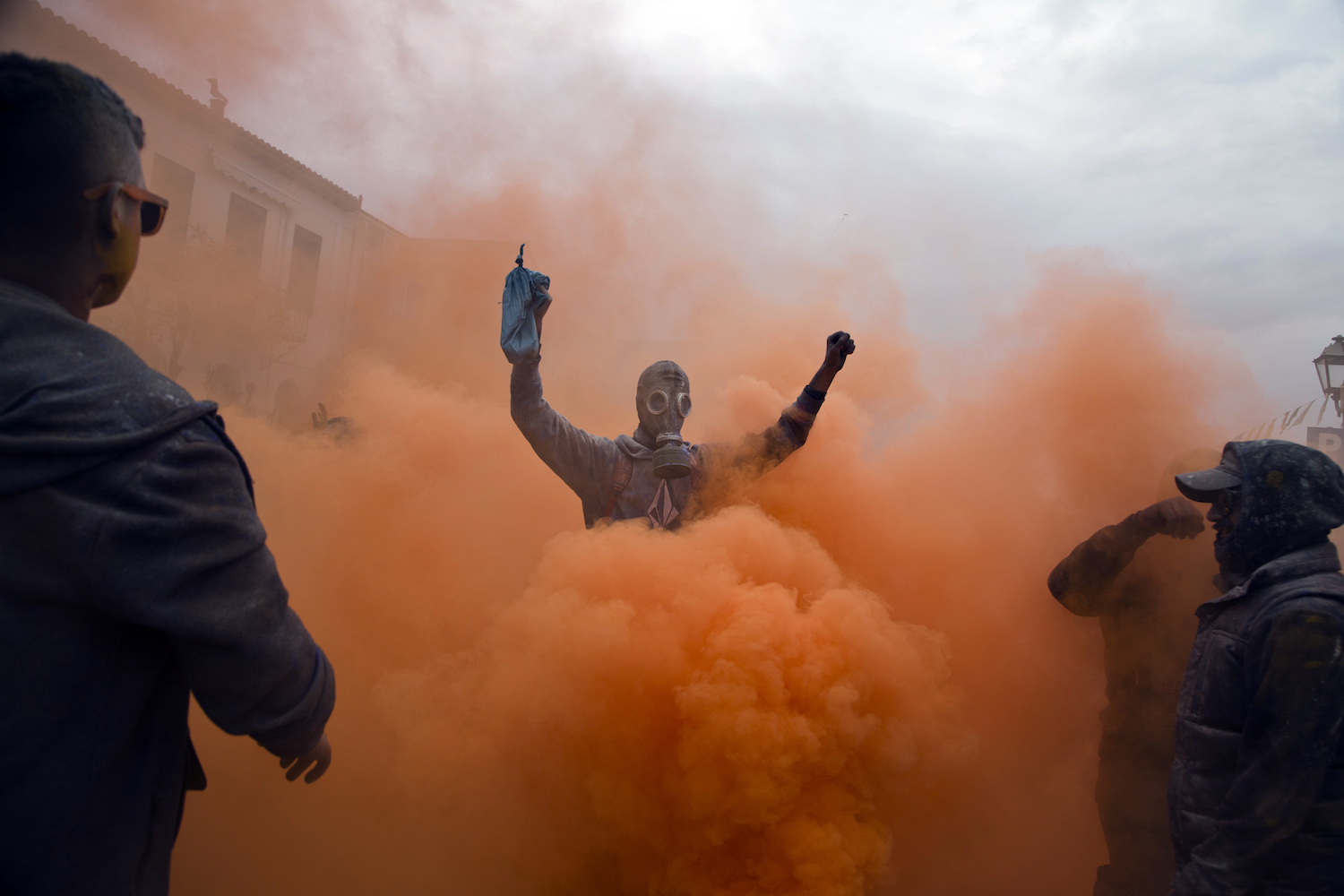ギリシャの海沿いにある美しい町では、一年に数時間だけ、住民や観光客が無礼講を許される。

AP Photo / Petros Giannakouris
いわゆる「小麦粉戦争」は、ガラクシディの古い港の沿岸道路で開催される。参加者は、爆弾に見立てた粉袋を手に、カラフルに色付けされた小麦粉を互いにぶつけ合う。

AP Photo / Petros Giannakouris
これは文字通り「色が爆発する」イベントで、毎年「聖灰月曜日」と呼ばれる、紀元前から伝わるギリシャの伝統的なカーニバルの終わりと、四旬節の始まりを告げるキリスト正教の祝日に行われる。

AP Photo / Petros Giannakouris
ガラクシディはアテネから200キロ(120マイル)西に位置する人口わずか1,700名の町だ。かつてこの地は主要な貿易港であったが、19世紀に蒸気機関が登場したことから、その影響力は失われていった。

AP Photo / Petros Giannakouris
町には伝統的な石造りの住宅が多く残るなど、往年の栄光の面影が残っている。

AP Photo / Petros Giannakouris
ギリシャ中心部につながる道路が整備されたのは1960年代に入ってからで、町にはギリシャ国内の孤島であるような独特の景観が多く残っている。
GALAXIDI, Greece (AP)
For a few hours every year, residents and visitors of this pretty Greek seaside town have a license to lose their civility.
They have what’s known as a “flour war” — participants pelt each other with bags of dyed flour along the coastal road lining Galaxidi’s old harbor.
It’s an explosion of color that takes place every Clean Monday, an Orthodox Christian holiday marking the start of Lent and the end of the carnival season which holds onto many of the country’s pre-Christian traditions.
Some 200 kilometers (120 miles) west of Athens, Galaxidi only has about 1,700 inhabitants but it was once an important trading port. Its influence declined with the advent of steam power in the 19th century.
Some of the town’s former grandeur remains, including many of its traditional stone houses.
The town only acquired a proper road link to the rest of central Greece in the 1960s, leaving much of Galaxidi with the appearance of a Greek island.
GALAXIDI, Greece (AP)



